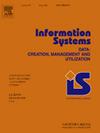The ability to predict product sales is invaluable for improving enterprises’ routine decisions of inventory optimization. The most effective solution of sales prediction in real applications is ensemble learning. One challenge of the solution is that it is hard to make timely and accurate predictions because of inadequate decision information and complicated and changeable sales environments. Besides, seeking optimal model combinations from the candidate set is often inaccurate and time-consuming. Another important challenge is that the predicted sales seldom consider “replenishment” of the inventory, which may lead to even higher cost. To address the challenges, we propose a novel dynamic sales prediction model with Auto-Learning and Elastic-Adjustment mechanisms (DSP-FAE): Dynamic sales prediction model can capture dynamic changing patterns of sales time series more effectively. Auto-Learning is used to automatically customize the optimal ensemble learning strategy for each warehouse-product combination in a more efficient way. Elastic-Adjustment is proposed to design a deep neural network-based adjustment factor to correct the predicted sales, which can significantly reduce inventory costs. Extensive offline and online experiments are conducted to verify the performance of the proposed model on two real-world datasets: Galanz and Cainiao. Experimental results show that the proposed DSP-FAE performs better than the selected 10 state-of-the-art baselines significantly in terms of MAE, RRSE and CORR. More importantly, it can save more than 20% inventory cost compared with traditional solutions.


